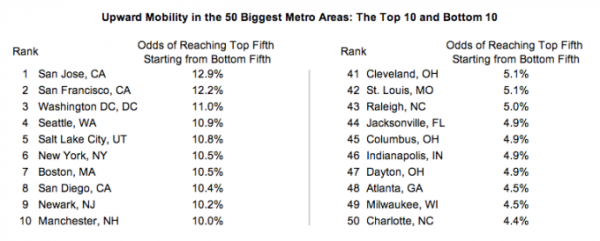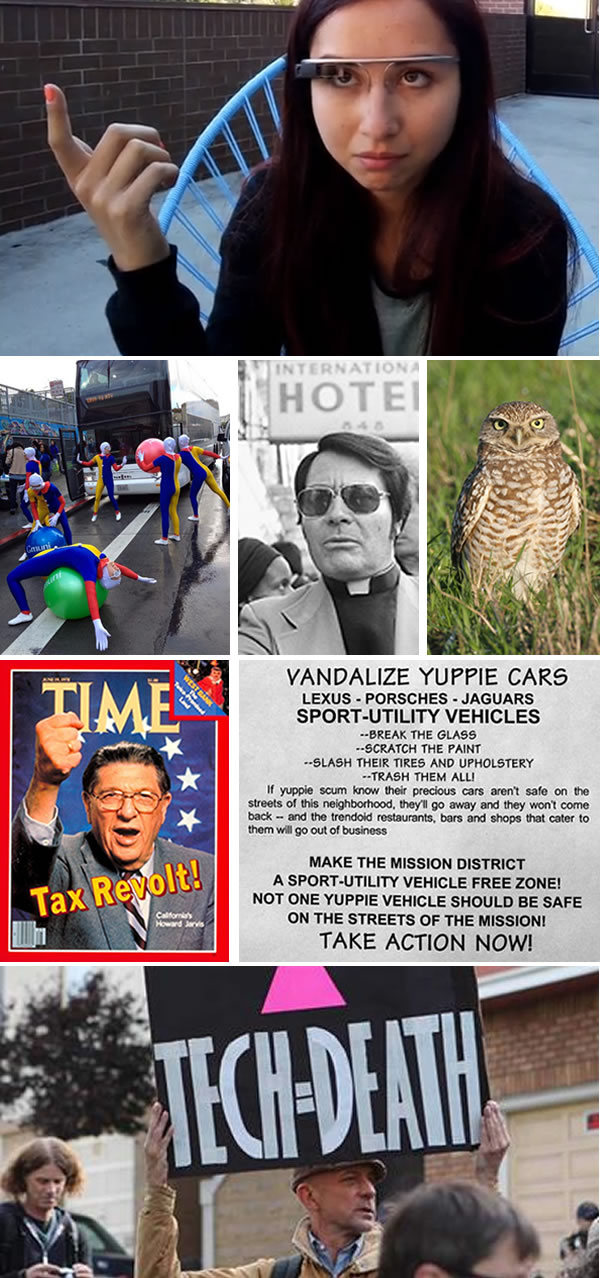If you’re looking for some deep insight into the current fight in San Francisco over housing, gentrification, haves vs. have-nots, and techies vs. everyone else, Kim Mai-Cutler has written an excellent really-long-form piece on the various factors that contributed to the current situation. It’s not just the influx of techies moving in for cushy jobs and the long-time working class locals they’re displacing, but also:
- “The Great Inversion”: the current migration to cites in general,
- a willingness to create jobs matched by an equal unwillingness to creating housing,
- San Francisco’s byzantine planning process and zoning regulations,
- San Francisco’s city government,
- people’s tendencies to live in their own bubbles,
- rich non-techies trying to keep development to a minimum,
- progressives who refuse to believe in supply and demand,
- environmentalism as an excuse to curb development,
- a lack of affordable housing,
- incentives that fuel that lack of affordable housing,
- the city’s poor shape in 1978, compounded by Reverend Jim Jones (yes, the “drinking the Kool-Aid” guy), the murder of Harvey Milk, gas lines from the Iranian crisis, and Howard Jarvis’ tax revolt,
- incredibly low property and corporate taxes,
- the complex effect of rent control, especially with the lack of vacancy control,
- an economy prone to booms and busts,
- the Ellis Act, an act explicitly designed to let landlords go out of business, and its abuses,
- resentment against incoming techies, their amenities, and the businesses that seem oriented solely towards them, and
- the “new nativism”.
It’s a big, complex mess, but as Mai-Cutler points out a couple of times in her long essay, it doesn’t have to be this way. At the end of her piece, she makes some calls to action:
- To techies: To participate in the communities in which they now live, and participate in San Francisco’s civic life, as other companies like The Gap, Levi Strauss, and Salesforce have done, and to understand that there are locals who could benefit from their help.
- To homeowners: Enough with the NIMBYism and generation theft, already!
- To activists: You can’t logically fight both development and displacement. Worse, your antagonism will force deals to take place behind closed doors.

Mai-Cutler points out that one of the reasons San Francisco, like many other cities, is attractive to all sorts of people is that it provides opportunities not just for the rich, but for the poor as well. While the income inequality in the San Francisco Bay Area is distressing, it’s also an area with the highest chance that someone in the bottom 20% will end up in the top 20%. WhatsApp founder Jan Koum is probably the most recent high-profile example.
I’m going to finish with the closing paragraphs of her article:
In conclusion: The crisis we’re seeing is the result of decades of choices, and while the tech industry is a sexy, attention-grabbing target, it cannot shoulder blame for this alone.
Unless a new direction emerges, this will keep getting worse until the next economic crash, and then it will re-surface again eight years later. Or it will keep spilling over into Oakland, which is a whole other Pandora’s box of gentrification issues.
The high housing costs aren’t healthy for the city, nor are they healthy for the industry. Both thrive on a constant flow of ideas and people.
So while Google may not be opening a giant office in Detroit anytime soon, the people of Detroit and the Midwest are coming here.
I meet them every day.
There are people like Brian Clark, who actually did move from Detroit, and was living off various hackathon winnings while teaching coding in MissionBit’s after-school programsfor San Francisco’s public school students. Earlier this spring, he was literally sleeping on friends’ couches, eating one meal a day. But he won the Launch Hackathon and now has initial funding for a new startup called Vue, a mobile feedback and user engagement tool he built.
Or like Rey Faustino, who I wrote about last month. He grew up in a working-class family in Southern California that relied on social services to make ends meet. Now he’s working on fixing the problems he remembered as a child through One Degree, which is a Yelp-like platform that helps Bay Area families find the right non-profits and social services for them. It’s supported by Y Combinator and has thousands of users.
Many of the people who come here will stay, and make vital contributions for decades through their work, their taxes and their charitable contributions. Some will come for awhile and then go back and invigorate entrepreneurial ecosystems back home. This circulation of creative talent is crucial not only for the Bay Area, but for the rest of the United States.
I would not want to deny anyone — rich or poor — the chance to transform or be transformed by this place.
Read the article. It’s fantastic food for thought.
